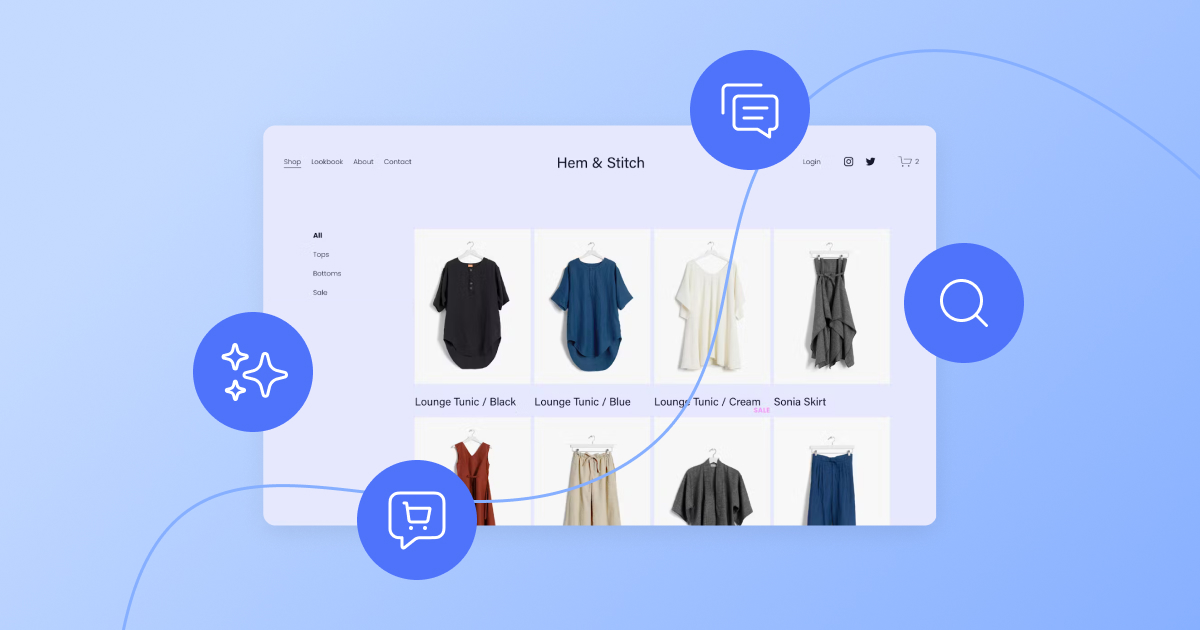This article was written by Justin Fowler, Product Manager at Clearspeed.
At a glance, product positioning is the process of determining how you want your product to be seen and used by your target demographics.
In order for your product to be successful, you’ll need to conduct thorough market research, think strategically, and come up with an approach that differentiates you from your competition.
What is product positioning?
Product positioning is a strategic activity explaining where and how your product or service fits in the current marketplace and why it’s better than other alternatives. The end goal is to determine your target audience, their needs, and how your product can solve customer problems.

When positioning your product, you’ll want to consider the following factors:
Unique features
What makes your product unique? What are the most important features of this product, and what makes them original? How do you want these features to be seen by your audience – and how are they implemented in the product design?
Audience appeal
Who is your target audience? How can you market this product so that they see it as more attractive or “worth it”? What would they like to see from your product in the future?
Competitive advantages
Even if your market is relatively new, you’re likely going to face some competition. What are the key competitive advantages your product has and how can you market and promote them?
Category or industry
What is the market category for this product? How will people see it? Will consumers immediately understand how it fits in the marketplace? For many products, there are obvious answers to these questions. For others, your definition could dictate its ultimate fate.
Target customers
Who is your target customer? Who is going to be using this product and how are they going to see it? You’ll need to define the product features and utility differently if you’re targeting a fundamentally different audience.
For example, products marketed to teenage girls and those marketed to middle-aged men rarely highlight the same features and advantages. What are the core values, needs, and perceptions of your audience?
Pain points to be addressed
All high-quality products solve some sort of problem or address a major pain point. So what, exactly, does your product do? What pain points does your product address? This part of the equation can help you craft much more effective advertising – and make better pitches to your target audience.
Mission
What is your product mission statement? In other words, why does your product exist? What problem is it trying to solve? What are your objectives, and how are you going to serve your customers?
Vision
You’ll also need to think about your vision statement. What is your vision for the future? What are you aspiring to achieve? This is similar, yet distinct from your mission statement.
Brand identity and values
Your mission and vision are likely already part of your brand identity, but you’ll need to think about other variables as well. Does your product have a brand that’s distinct from your company’s brand? Either way, what is your brand personality like? What kind of colors, styles, and attitudes best represent your company and your product? How do you want to be perceived?
Key differentiators
Finally, what are your key differentiators? What makes your product appealing? What are the features of this product that set it apart from similar products on the market?
There may be a lot of factors to consider here, so think carefully about your audience and your competitive positioning. Are you less expensive? More robust? Do you offer better customer service? Are your brand and core values more subjectively appealing?
Why is product positioning important?
For starters, product positioning helps you define and better understand your target audience and their perceptions of your product. Having this understanding can lead to better messaging, a more effective marketing strategy and advertising campaign(s), and ultimately, more sales and revenue. It can also lead to higher customer satisfaction and customer retention, helping your business earn more revenue over time.
Product positioning is also important for the future of your product development. The strategic foundation of your product and the course of your product plan can always be tweaked and improved as you learn new information.
How can I position my product?
Now that I’ve covered what product positioning is and why it’s important, let’s look at how to carve out a unique position in the market.
Step 1. Rely on objective data
Many new entrepreneurs and inexperienced product developers rely on assumptions, instincts, or personal hypotheses to support their work. But it’s almost always better to rely on objective data whenever possible.
Thanks to modern measurement and analysis tools, it’s easier than ever to get this data. For example, you can use a Product/Market Fit (PMF) survey to learn more about your customers, your product, and your competitive environment. You can also use Net Promoter Score (NPS) tools to better understand customer loyalty – and your capacity to get referrals.
Focus groups are also a useful way to gather actionable data while tuning in to what’s on consumers’ minds.
Step 2. Determine your product’s positioning statement
A critical part of product positioning is crafting your positioning statement.
You may have heard this phrase before – a typical positioning statement goes something like this: “For [users] who have a [need], [our product/service] is a [solution] that solves it with [this benefit].”
Using the above statement format, you can easily identify who your ideal customers are, what types of needs they have, and how your product solves their problem using a specific benefit or feature(s).
Don’t let the simplicity of this statement fool you. Crafting an effective positioning statement is critical to understanding your customer and viewing your product from their perspective. Spend time thinking about and testing this statement to make sure it connects with your audience and truly resonates with potential customers.
Step 3. Test your hypothesis
Try to find evidence that supports (or rejects) your hypothesis.
Look for ways to test your idea or concept and pay attention to what the market is telling you. Primary market research is favorable, but you can also use secondary research such as reports published by industry experts, trade magazines, and academic journals. And, as you are validating your opinions, try to keep an open mind and always consider the counterargument whenever possible.
Step 4. Get feedback from multiple teams
Product positioning is cross-departmental. It’s relevant to departments like marketing, sales, product management, product development, and even customer service.
Accordingly, it’s a good idea to get feedback from multiple teams when figuring out what makes your product unique, the benefits of your product, how your customers see the world, what types of product positioning strategies work best, and whether or not your current strategy is actually working as intended.
When all of your teams can rally around a product mission, you can have confidence that your product strategy is aligned to support one overarching goal.
Step 5. Remain adaptable
Few businesses are able to nail product positioning from the outset. If you want a higher likelihood of long-term success, it’s important to remain adaptable.
That means gathering new information, challenging your previously held assumptions, experimenting with new tactics and approaches, tweaking your marketing plan, and even redefining your product, when necessary.
Examples of great product positioning
Let’s take a look at great product positioning in action. Here are some brands that get it right.
Allbirds
What sets this footwear and apparel brand apart? Two words: sustainability and accountability.
Allbirds is fighting the climate crisis by committing to be 100% carbon neutral – and inviting other businesses to follow suit.
TED
“Thank you for coming to my TED Talk.”
Many lengthy social media posts end with this phrase. And it’s a brilliant example of product positioning done right. Why? Because it demonstrates the ubiquity of the TED brand and its strategy to promote conversation and community knowledge sharing.
Apple
Apple dominates the tech market, offering products customers are fanatical about buying the minute they hit shelves. Having Apple’s latest and greatest phone – and accessories – has become a marker of status.
For Apple, it means they’re nailing product positioning focused on innovation, design, simplicity, and imagination – again and again.
Are you ready to get serious about your company’s product positioning? Do you wish you knew more about your product/market fit (PMF) and customer perceptions? Start gathering product and customer feedback with Delighted’s experience management software for free.
Additional product positioning resources
- What is product development?
- How to measure and track product/market fit
- Product-led growth: A product manager’s insight into growth hacking
- 10 best product survey questions to gather customer feedback
About Justin Fowler
Justin Fowler is a Product Manager with over 5 years of experience and a Mentor at Product Gym. He transitioned into product management from a lengthy career in the insurance industry and now works with an AI-enabled voice analytics software company. Justin is living proof that you are not too old or out of touch to learn new tricks and practice another trade — if you are willing to put in the work.







